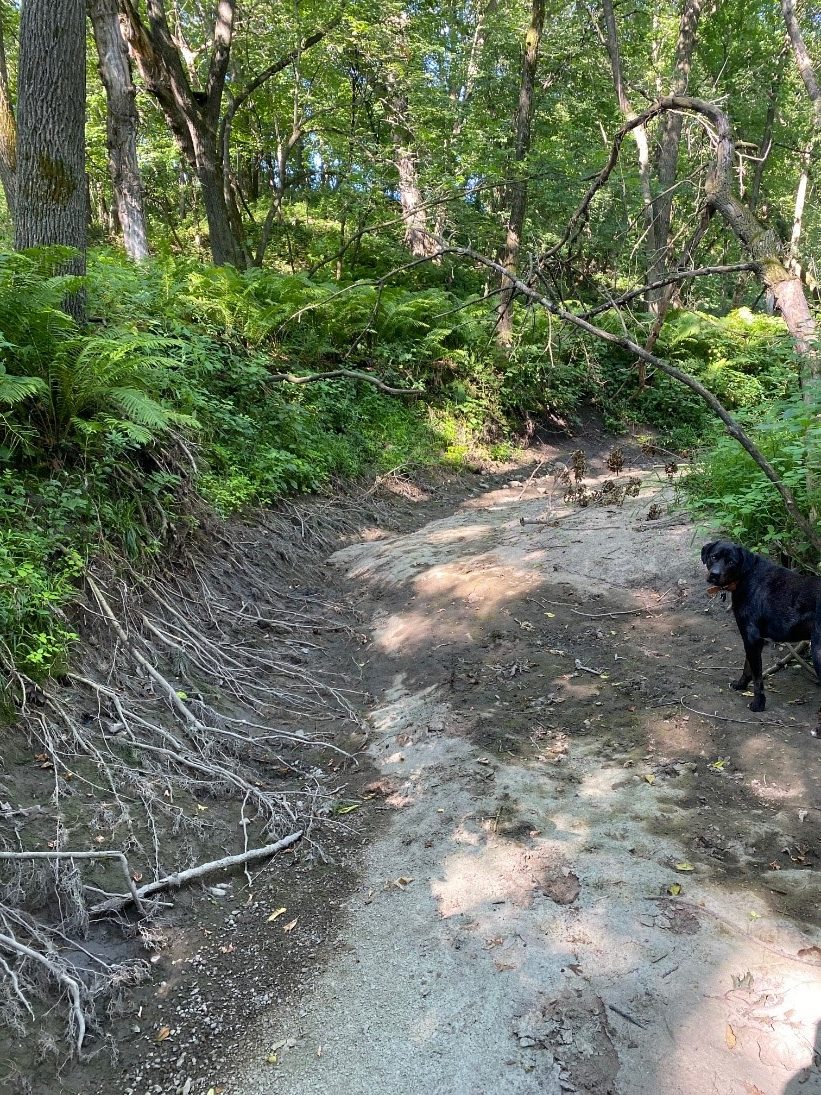We usually only see the banks of this ephemeral stream on the north side of our Dakota County property when water levels are low. When the corn is high, the creek is low to non-existent, and that is cause and effect.

The converse is also true: the creek is high when corn is low (or not yet planted). That is because the agricultural drainage installed or dug across the landscape works even if there is not a crop. Subsurface tile drainage works all winter long to drain the 4’ of soil above it to the ditch. Plus, when there is no crop cover, there is less return of moisture to the atmosphere.
Add the rain that Minnesota typically sees in May through June, and combined, the sky and the agricultural drainage network deliver more water in a shorter period than the creek has ever seen.
Exposed roots aren’t normal on a stream bank, especially if they occur on both banks. It means that the streams are widening in response to these large spring flows. Wider streams deliver excess sediment and the phosphorus attached to that sediment to downstream receiving waters, in our case to: Chub Creek, the North Cannon River, Lake Byllesby, Lake Pepin and ultimately the Gulf of Mexico. These receiving waters are either turbid with mud or green with algae as the water heats up.
The impact of agricultural drainage and changes to the water cycle that short-lived annual crops have on our rivers is well documented. There was a plan introduced to address the problem this legislative session. There is wind of a 4th, Special Legislative Session coming up. Will the plan to create a framework to compensate farmers to hold water back be worthy of consideration by the Minnesota Legislature?
We hope so, and so does Atlas.
– Carrie Jennings, research and policy director
I had lots of photos of this phenomenon throughout SW Minnesota. It has been happening for several decades and getting worse with even more tiles going in all the time. Downstream folks and property owners take the damage all the way along the watershed from the energy and velocity and water quality is impaired as well.
Beyond that, the aquifers lose potential recharge as the water doesn’t stay on the landscape long enough to soak in, even as we pump those aquifers harder for drinking water and irrigation because we drained the rooting zone too fast and too deep too soon.
We are causing a lot of expensive problems because we don’t understand how our collective actions affect others.